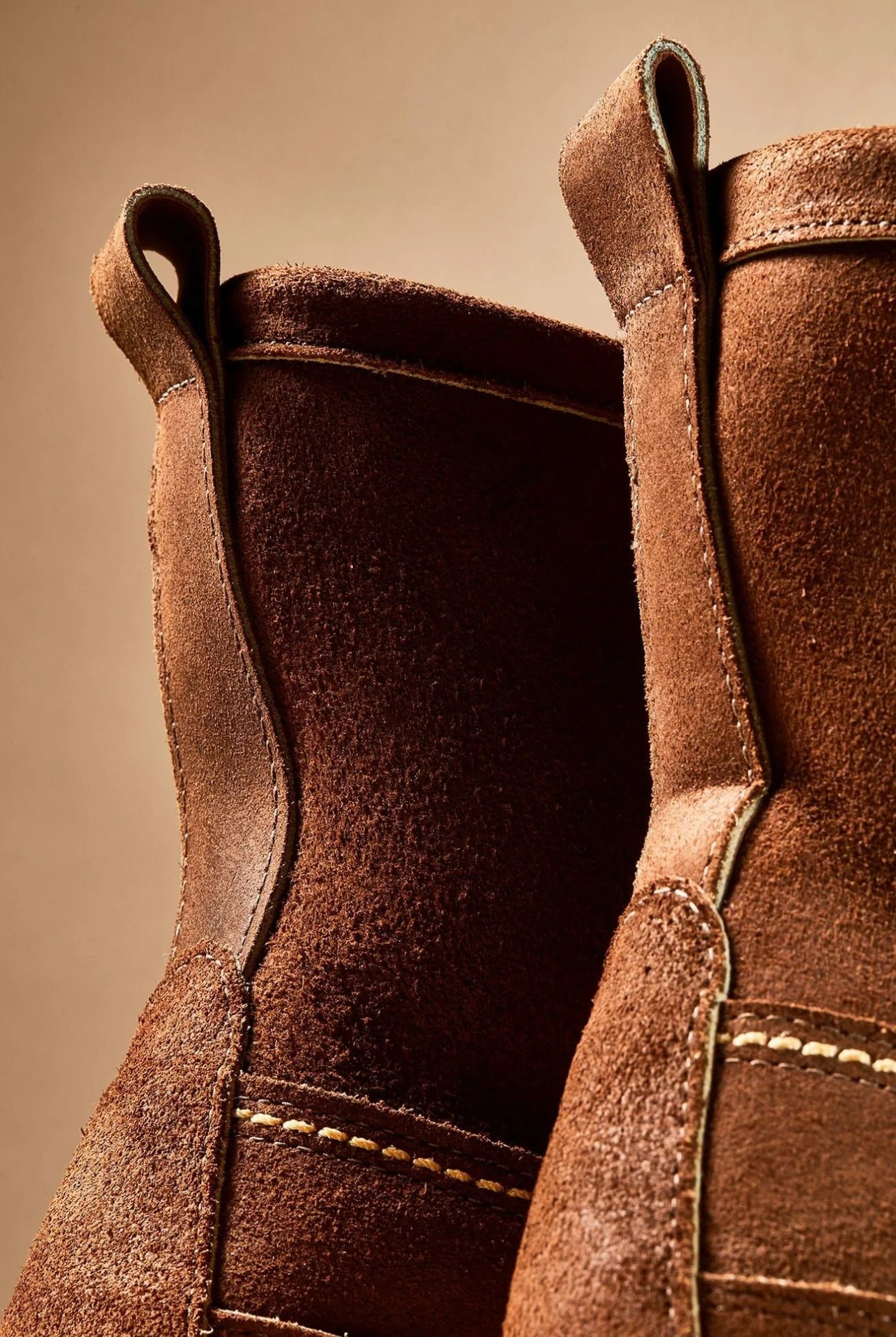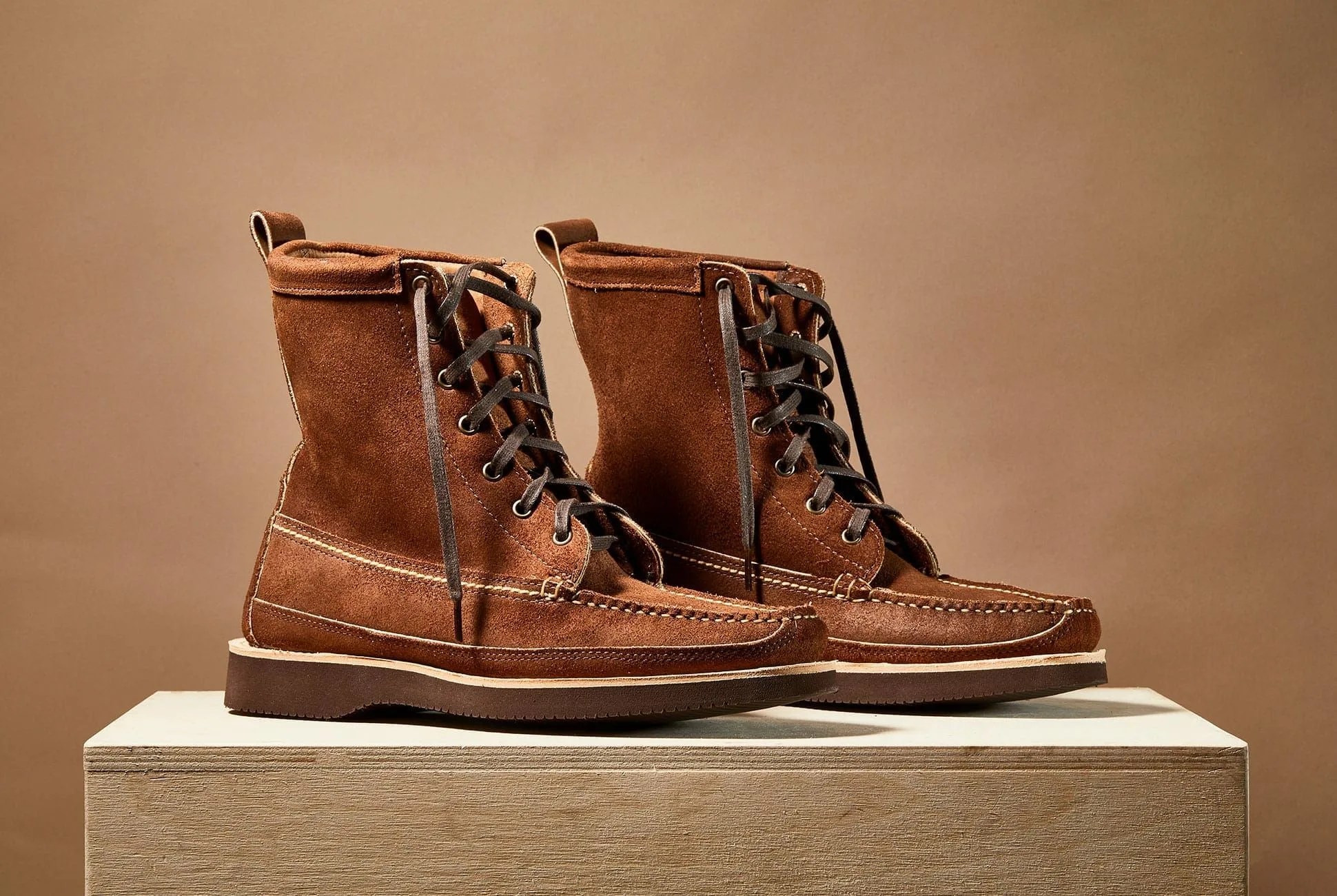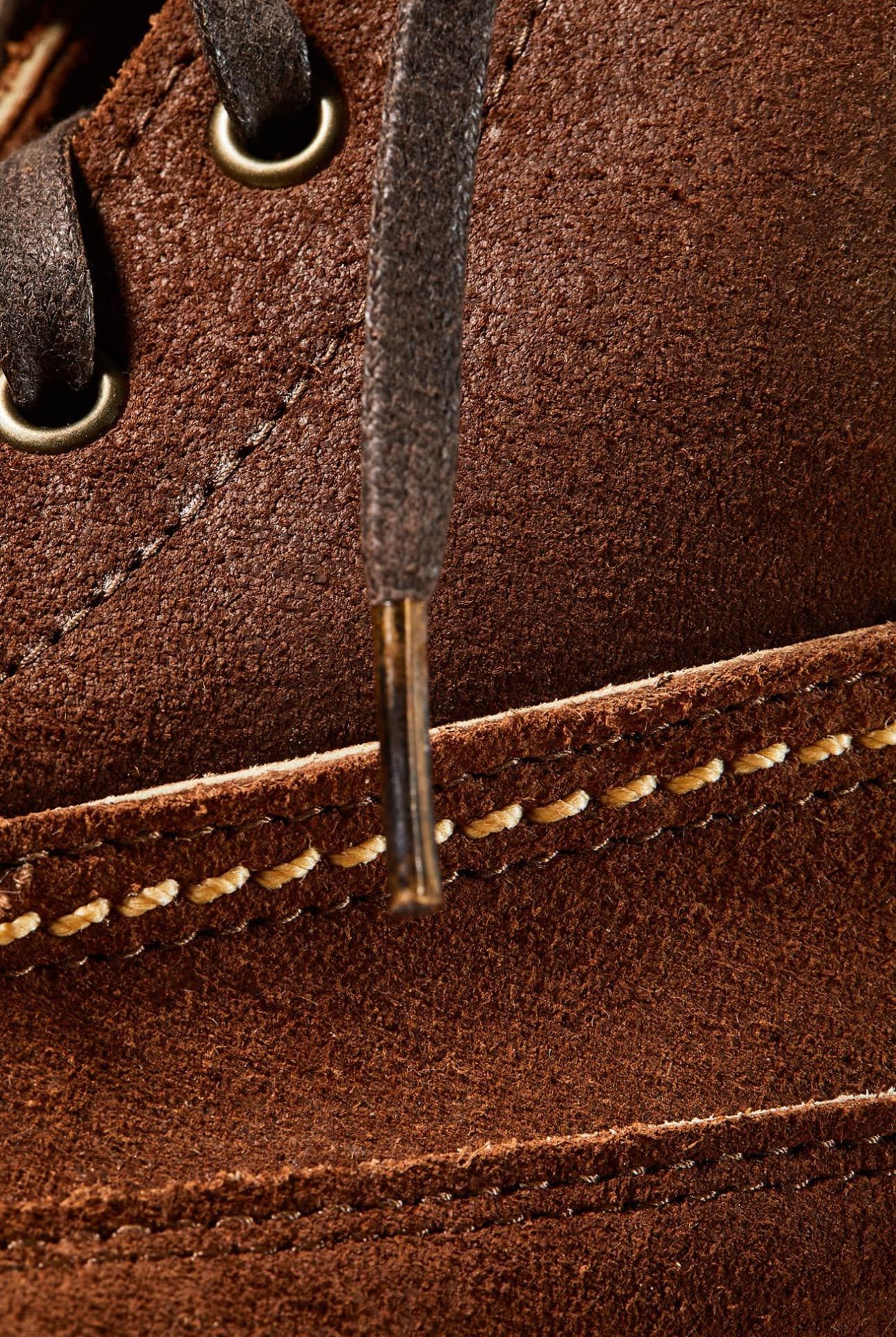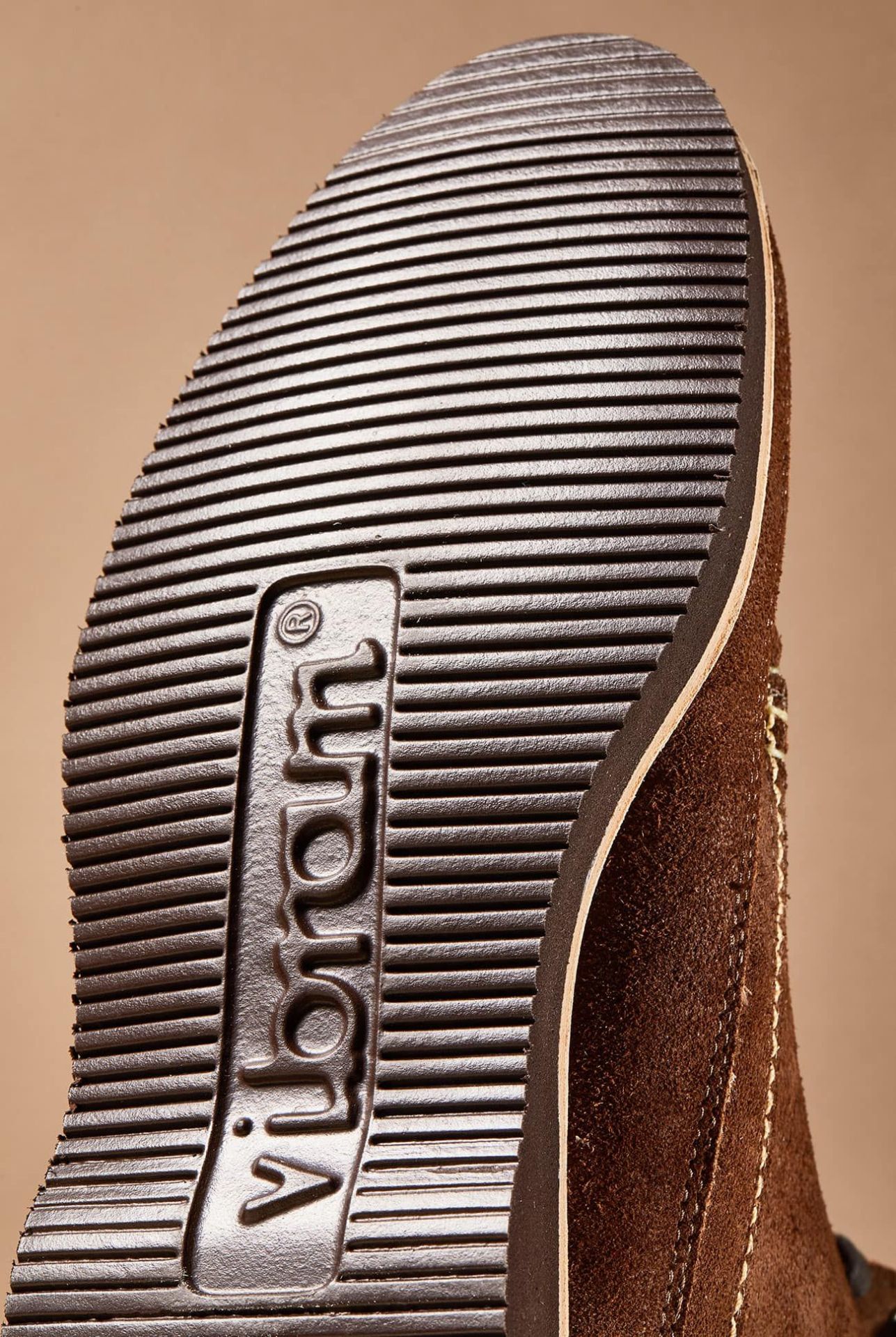The last century has registered the incredible rise and unfortunate decline of the footwear industry in Maine. Though the early decades of the 20th century were booming, many brands moved manufacturing overseas in the ‘80s and ‘90s, shuttering factories across the state. A large, skilled workforce became unemployed as the region’s signature style — hand-sewn moc-toe boots — were offshored. While the industry isn’t what it was 100 years ago, a handful of brands are keeping the domestic tradition of handsewn moccasin footwear alive.
One of the best examples is actually a new brand from the state, Maine Mountain Moccasin, which was founded in 2017. Its owner Dan Heselton had worked at Timberland before teaming up with designer Greg Cordeiro to found New England Outerwear in 2012. The duo enlisted the hand-sewing skills of Bill Herrick — who had perfected his craft for years at Warren Shoe and Quoddy — to create a line of traditional handsewn shoes and boots which quickly gained a well-earned reputation for their quality and style. After Cordeiro left the brand for a design job at Clarks, Heselton decided to further refine his vision and start Maine Moccasin Company.
The brand offers a range of hand-sewn boots and shoes utilizing local materials like Tazman leather and made-in-Maine threads. The company doesn’t cut corners when manufacturing the different styles and the boots feature Blake/McKay welting, true moccasin construction and true double-vamp mudguards. Vibram soles come standard and each style is available in sizes 7 to 13. Also impressive is the price-point, which is noticeably less than some other Made-in-Maine brands. The shoes start at $270 and boots top out at $399. For the attention to detail and level of craftsmanship, that’s quite a reasonable price.
While Maine Mountain Moccasin footwear is a shining example of what Made-in Maine can offer, it’s also a top contender for one of the best American-made boot brands. To learn about Heselton’s background, vision for the company and favorite styles, we caught up with him after the Thanksgiving holiday.

Q: What is your history in the footwear industry?
A: I spent a number of years working at a major footwear brand and during my time there, one of my coworkers was an engineer who held the belief that making shoes or boots had become too segmented. There’s designers, engineers, and supply chain people all working separately. Most people at this company didn’t know the entire process of constructing a shoe. So he started a class that would meet early morning a day or two each week and we would tape shoe lasts, learn construction processes and pattern making. We moved to the sample room and got to use some of the machines, which was an amazing thing to be part of. That was sort of my point of realization that I wanted to do something more, something my own.


